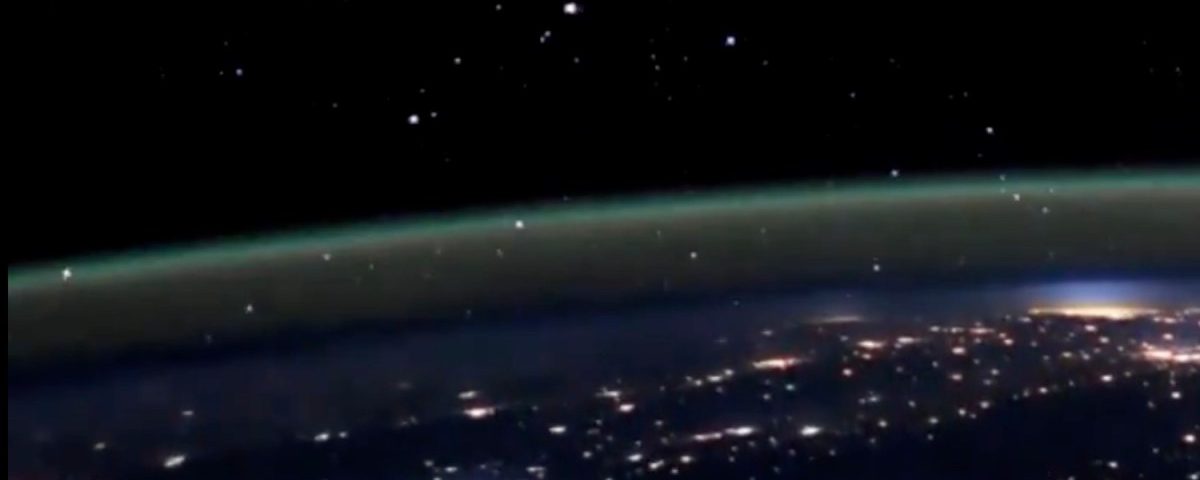Space station video shows ‘cosmic fireflies’ high above Earth
Space station video shows ‘cosmic fireflies’ high above Earth
Space station astronaut Don Pettit has captured footage of what he describes as ‘cosmic fireflies.’
Full Article
On his fourth trip to orbit, NASA astronaut Don Pettit has been sharing some wonderful imagery captured from the International Space Station (ISS) since his arrival there in September. His latest effort shows distant stars, city lights on Earth some 250 miles below, and what he describes as “cosmic fireflies,” but which are actually Starlink internet satellites deployed by Elon Musk’s SpaceX company. Cosmic fireflies. Actually, these are Starlink satellites momentarily flashing sunlight towards @Space_Station. pic.twitter.com/rOKUdLlP3f — Don Pettit (@astro_Pettit) December 1, 2024 As Pettit points out, the flashes of light are sunlight reflecting off the small Starlink satellites while orbiting Earth 100+ miles above the space station. After the first Starlink satellites were deployed in 2019, SpaceX has now sent more than 6,700 to low-Earth orbit. It currently has permission to deploy up to 12,000 of the satellites, but its goal is to send as many as 42,000 to orbit. It means that sightings of the satellites from the ISS will only grow in number over the coming years — at an even faster rate than now when you consider that other companies like Amazon also want to send small satellites to orbit as part of their own internet-from-space initiatives. And it’s not just astronauts who can see SpaceX’s satellites. Astronomers have long complained that sunlight glinting off the Starlink satellites, which form the backbone of SpaceX’s space-based internet service for more than 4 million subscribers globally, is interfering with their ability to use ground-based telescopes to view deep space. Indeed, the problem appears to have worsened since SpaceX started deploying the newer, V2 version of the Starlink satellite in February last year, with disruption also reported to radio astronomy observations due to the electromagnetic radiation emitted by the satellites. With SpaceX launching about 40 second-generation Starlink satellites every week, astronomers have warned that the problem is becoming increasingly severe. Professor Jessica Dempsey, director of ASTRON (Netherlands Institute for Radio Astronomy), told BBC News recently that the situation is “threatening the entirety of ground-based astronomy in every wavelength and in different ways. If it continues, without the sort of mitigation to make these satellites quiet, then it does become an existential threat for the kinds of astronomy we do.” SpaceX has been working to address astronomers’ concerns, but despite the efforts, some astronomers remain skeptical about the effectiveness of these measures, particularly for radio astronomy. The International Space Station (ISS) had to steer clear of a piece of space junk on Monday — the second such maneuver that the orbital outpost has had to make in a week. “The ISS is orbiting slightly higher today after the docked Progress 89 cargo craft fired its engines for three-and-a-half minutes early Monday,” NASA said in a post on its website. “The debris avoidance maneuver positioned the orbital outpost farther away from a satellite fragment nearing the station’s flight path.” Operators of the International Space Station (ISS) were recently alerted to what was described as an “unexpected odor” emanating the Russian Progress cargo spacecraft that docked with the orbital outpost on Saturday. After launching from the Baikonur Cosmodrome in Kazakhstan, the Progress spacecraft brought with it about 2.5 tons of supplies and other cargo for the seven-person crew aboard the orbital outpost. The spacecraft’s arrival at the station’s Poisk module appeared to go smoothly, but when Russian cosmonauts Ivan Vagner and Aleksandr Gorbunov opened the spacecraft’s hatch, they noticed an odor along with drops of an unidentified liquid. The sixth Starship mission captured from the ISS. NASA / Don Pettit NASA astronaut and current space station inhabitant Don Pettit seems to have the luck of the stars. During SpaceX’s sixth test flight of its massive Starship rocket from Boca Chica, Texas, on Tuesday, the International Space Station (ISS) just happened to be passing directly above — some 250 miles above, to be precise — giving keen photographer Pettit the perfect opportunity to capture the Starship’s launch. Upgrade your lifestyleDigital Trends helps readers keep tabs on the fast-paced world of tech with all the latest news, fun product reviews, insightful editorials, and one-of-a-kind sneak peeks.



